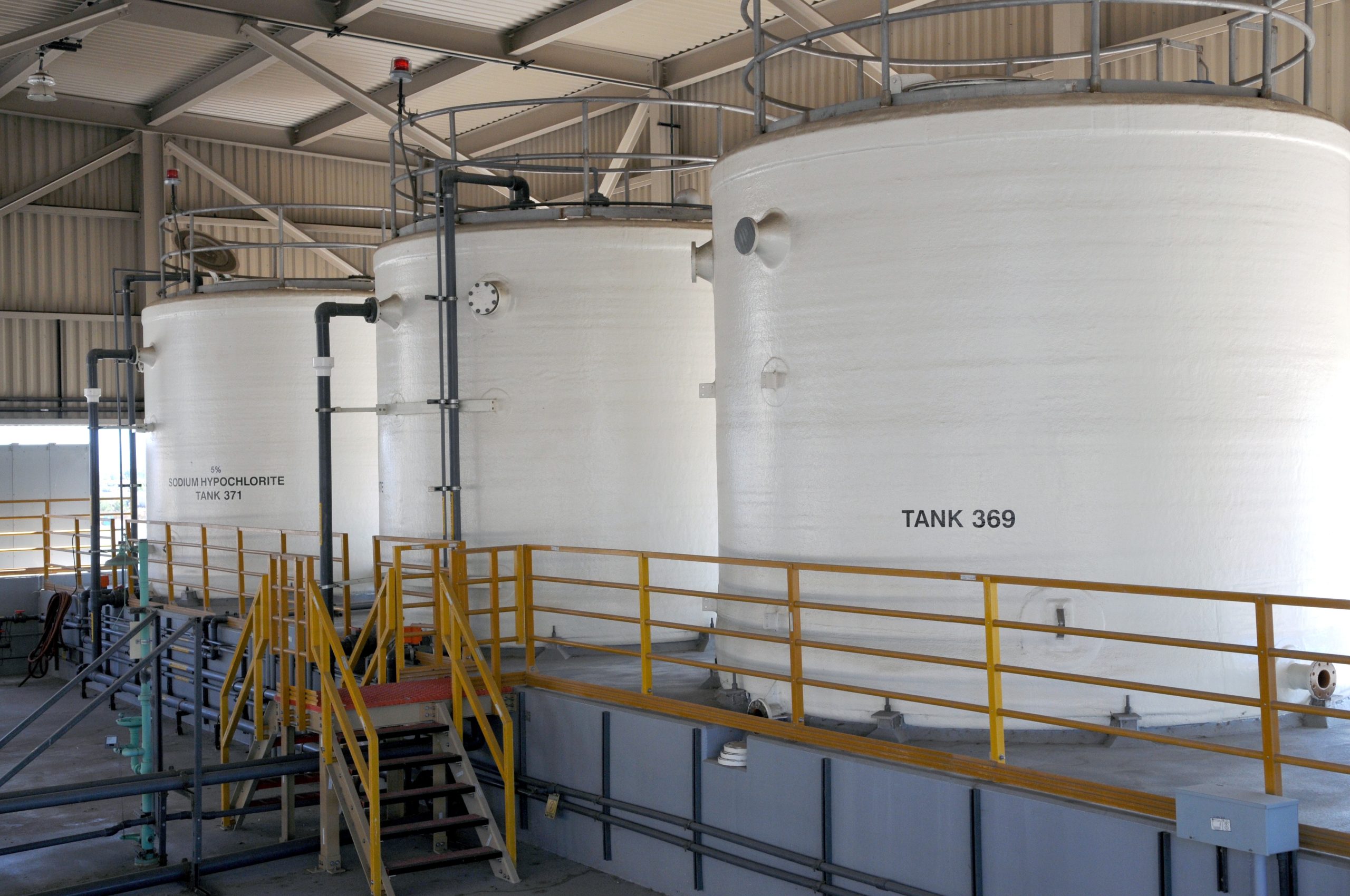
- admin
- December 28, 2023
Mastering the Art of Sodium Hypochlorite Storage: A Comprehensive Guide
For industries navigating the complexities of storing bulk chemicals, acids, fuels, and gasoline, ensuring safety is paramount. The challenges intensify when dealing with corrosive and hazardous substances, where a spill or leak can lead to catastrophic consequences.
Enter the crucial role of high-quality storage tanks, especially when it comes to handling sodium hypochlorite—an ionic compound with applications in water disinfection and cleaning. Proper storage is vital to protect it from UV rays, oxidation, and off-gassing
Choosing the Right Storage Tank: Key Factors
- Material Matters:
– Opt for fiberglass reinforced plastic, polyethylene, or chlorobutyl rubber-lined steel tanks for sodium hypochlorite storage.
– High-density polyethylene tanks stand out for their robustness and durability, offering resilience to corrosion.
- Avoid Steel Tanks:
– Steel tanks are incompatible with bleach, degrading when storing sodium hypochlorite.
- Reinforcement and Linings:
– Tanks with linings protect against corrosive activities, preventing contamination and structural damage.
– Corrosion-resistant piping, fittings, and gaskets shield chemical contents from environmental factors.
- Secondary Containment:
– Tanks with built-in secondary containment and catchment basins prevent hazardous chemical leakage.
– Ensure chemical resistance and capacity to hold 110% of the total system fluid in case of tank failure.
- Quality Component Materials:
– PVC/CPVC pipes, titanium encapsulated bolts, PTFE, PVDF, FKM, and tantalum are recommended for sodium hypochlorite storage.
- Proper Ventilation:
– Adequate venting prevents oxygen accumulation and off-gassing of NaOCl. Vent size should be twice the inlet pipe diameter.
- Concentration Strength Consideration:
– Tailor the storage vessel to the concentration strength of the chemical compound
Sodium Hypochlorite Storage Requirements: Pro Tips
1. Dilution is Key:
– Store bleach in diluted form to enhance safety.
2. Indoor Storage Preferred:
– If outdoor storage is inevitable, take precautions to mitigate UV exposure and breakdown, including heat tracing, insulation, and mastic coatings.
3. Ideal Temperature:
– Store bleach below 60 degrees Fahrenheit or 15-degree Centigrade for optimal safety.
4. Separation from Incompatibles:
– Keep bleach separate from incompatible materials, reducing agents, and organic substances.
Sodium Hypochlorite Storage Tank Design: The Best Fit
Given its aggressive oxidizing nature, polyethylene tanks emerge as the safest chemical storage solution for sodium hypochlorite. Here’s why:
Polyethylene Tank Features:
– Specifically designed for sodium hypochlorite storage, polyethylene tanks overcome challenges posed by UV rays, off-gassing, and oxidation.
– Made of XLPE thermostat resin, these tanks reduce chemical degradation in sunlight, offering exceptional strength and resistance to environmental stress.
– The IMFO system prevents potential accumulation of transition metals and ensures full drainage, preventing leakage.
–High-Density vs. Cross-Linked Polyethylene Tanks:
– High-density polyethylene tanks excel in impact strength and long-term chemical compatibility.
– Cross-linked polyethylene tanks offer leak protection, ease of installation and maintenance, and cost-effectiveness.
If you are looking for similar complete guide on “Sodium Hydroxide storage requirements. You can visit the link here: https://www.gsctanks.com/sodium-hydroxide-storage-requirements/ . In this article you will know how to overcome the challenges that you may face while storing Sodium Hydroxide, and the measures you should take in order to store it properly.
For advanced, secure, and cost-effective chemical storage solutions, connect with GSC Tanks—the leader in manufacturing premium steel, fiberglass, and polyethylene tanks, among other industrial solutions. 🌐🛢️✨ #SodiumHypochloriteStorage #ChemicalSafety #GSCtanks #Innovation 🌟💼
- Sodium Hypochlorite Storage
Category
- Above Ground Fuel Tanks
- Above Ground Gas Storage Tank
- Above Ground Storage Tanks
- Above Ground Water Storage Tanks
- Agricultural Tanks
- Chemical storage Tanks
- Diesel Fuel Storage Tanks
- Diesel Storage Tanks
- Exernal FloatingRoof Tanks
- Farm Water Tank
- Fiberglass Oil Tanks
- Fiberglass Septic Tanks
- Fiberglass Underground Fuel Storage Tanks
- Field Erected Tanks
- Floating Roof Tank
- Fuel tank
- Industrial Chemical Storage Tanks
- Industrial Gas Tanks
- Industrial Plastic Tanks
- Industrial Storage Tanks
- Industrial Tank heating pads
- industrial tanks
- Natural gas
- Natural gas vs Propane
- oil storage tank
- Oil Storage Tanks
- Peracitic Acid
- Petroleum Tanks
- Residential gasoline storage tanks
- Residential Water Storage Tanks
- Sodium Hydroxide Storage Requirements
- Sodium Hypochlorite Storage Tanks
- Steel Storage Tanks
- storage tank failure prevention
- Storage Tanks
- Sulfuric Acid Tanks
- Uncategorized
- UnderGround Storage Tanks
- Water Storage Tanks

 Tank Size Calculator
Tank Size Calculator






